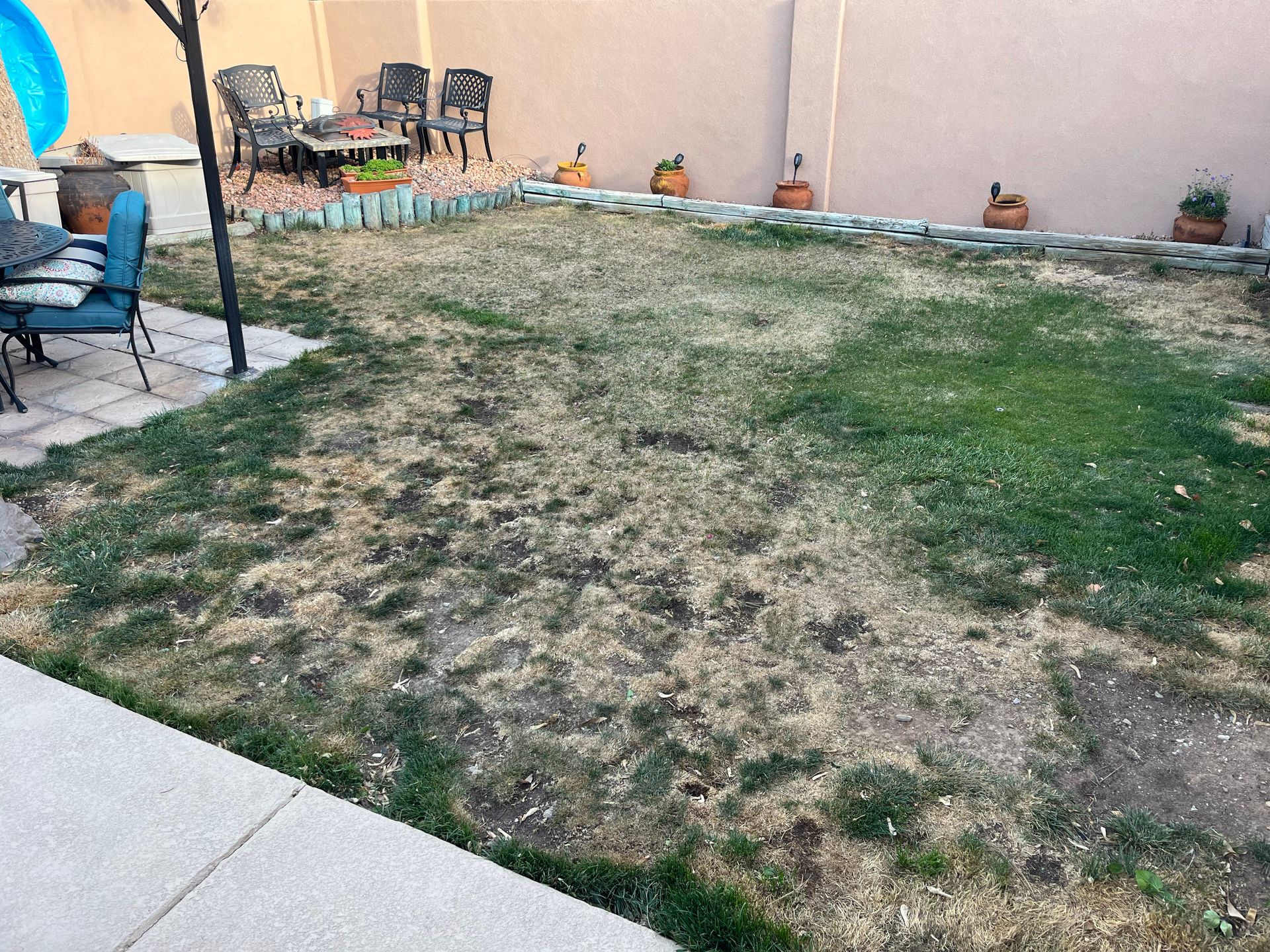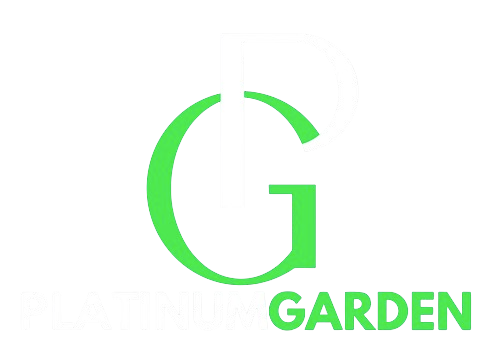
Lawn Care & Landscaping Tips
Take advantage of our lawn care and landscaping advice to beautify your lawn.
5 Advantages of Professional Lawn Fertilizer Services in Rio Rancho
Published on July 17, 2024
Dedicated Support and Customized Care
PlatinumGarden Landscaping LLC combines personalized services, top-quality products, and deep local expertise to deliver exceptional results. With our precision-based approach, your lawn will stay healthy, green, and strong throughout the year.
We proudly serve the following areas with our professional lawn fertilizer services:
- Rio Rancho
- Albuquerque
- Corrales
- North Valley
- North East Heights
- Bernalillo County
- Surrounding regions
LAWN CARE
The Importance of Yard Maintenance
Consistent yard maintenance is essential for the health and vitality of your grass, trees, flowers, shrubs, and more. Beautiful, thriving lawns don’t happen by chance—they require regular care to withstand challenges such as harsh weather, weeds, pests, and diseases.
Seasonal yard cleanups in spring and fall play a key role in keeping your outdoor spaces pristine and manageable year-round. By following a yard cleanup checklist and incorporating yard waste management tips, you can maintain a clean, attractive yard while preventing long-term issues caused by neglect.
Routine yard care is an investment in your lawn’s overall health, and a vibrant, well-maintained yard contributes to a happier home environment.
Yard Waste Cleanup and Disposal
Once you’ve cleared your yard of weeds and debris, it’s important to know how to properly dispose of the waste. Before tossing everything into trash bags or bins, take a moment to identify what qualifies as yard waste.
Yard waste includes items such as tree trimmings, branches, leaves, garden plants, brush, grass clippings, and lawn edging. These materials can typically go into outdoor waste bins or compost bins. Many people prefer using trash bags for yard cleanup because it helps them manage the waste more effectively.
For heavier items, be sure to use durable trash bags to prevent tearing. Depending on the amount and type of yard waste, a few sturdy bags—such as Glad® Large Trash Bags—are often enough to handle the job.
To ensure your yard waste is collected by your local service, avoid mixing in prohibited items like metal, food scraps, soil, sod, stones, mulch, or general garbage. Always check your local waste disposal guidelines to confirm what can and cannot be included in your regular trash pickup.
Tips for Proper Yard Waste Disposal
After completing your yard cleanup, it’s important to dispose of the accumulated waste responsibly. While burning yard debris like branches, leaves, and twigs might seem like a quick solution, it’s not the safest or most environmentally friendly option. Burning can contribute to air, soil, and water pollution, increase the risk of wildfires, and often violates local laws and regulations.
A more sustainable and eco-friendly approach is to recycle your yard waste. You can arrange for your local sanitation department to pick up your debris or transport it to a designated drop-off site if you have the means. Be sure to research the requirements of your local waste disposal service for handling yard waste. Most services require it to be placed in clearly marked bins or paper outdoor waste bags for proper collection.
Pruning Made Simple: Remember the 3 D’s
If you’re unsure where to start with pruning, just focus on the 3 D’s: dead, diseased, and damaged. Remove anything that falls into these categories to help your plant direct its nutrients toward healthy growth.
For vegetable plants, some gardeners add a 4th D: dragging on the ground. Trim any leaves or stems that touch the soil to minimize the risk of disease spreading to the rest of the plant. Following these guidelines will keep your plants healthy and thriving!
It’s easy to toss your pruning shears back in the shed after finishing the job, but taking a moment to clean them can make a big difference. A quick wipe-down helps prevent the spread of parasites, fungi, and diseases between plants, keeping your garden healthier.
The best part? It’s super simple—no need for a full scrub with hot, soapy water. Just wipe the blades with rubbing alcohol, or use a household disinfectant like Clorox or a spritz of Lysol, and you’re good to go!
Pruning is often considered a winter task, but that’s not always the case!
For most plants, late winter or early spring is the ideal time to prune. With the leaves gone, it’s easier to see the plant’s structure and make precise cuts.
However, for spring-blooming plants like lilacs, azaleas, rhododendrons, and viburnum, it’s better to wait until after they’ve finished flowering. Pruning too early could remove the buds and rob you of this year’s beautiful blooms.
Is Mulch Essential for Your Vegetable Garden?
Debating whether mulch is necessary for your vegetable garden? You’re not alone—many gardeners face this dilemma when striving to keep their plants healthy and productive. Imagine putting in hours of work planting seeds, only to see weeds take over or soil dry out under the blazing sun.
Mulch can be a game-changer. It not only conserves soil moisture and suppresses weeds but also improves soil health over time. This guide will explore the benefits of mulch, the types available, and the best ways to use it in your garden. By the end, you’ll have the knowledge to decide if mulch is the right addition for your gardening routine.
Key Benefits of Mulch
1. Moisture Retention
Mulch helps the soil retain moisture, reducing the need for frequent watering. Organic mulches like straw and wood chips absorb rainwater and gradually release it, keeping plants hydrated during dry spells. For best results, apply a 2-3 inch layer of mulch, ensuring it doesn’t touch plant stems to avoid rot.
2. Weed Suppression
A thick layer of mulch blocks sunlight, preventing weed seeds from germinating. Materials like shredded leaves or grass clippings work well to cover soil completely, reducing weed competition for water and nutrients.
3. Soil Temperature Regulation
Mulch acts as an insulator, stabilizing soil temperatures. It keeps the soil warmer during cool months and cooler during hot weather, creating a more consistent environment for plant roots. Early spring mulch can help the soil warm up faster for seed germination, while summer mulch protects roots from heat stress.
Key Benefits of Mulch
1. Moisture Retention
Mulch helps the soil retain moisture, reducing the need for frequent watering. Organic mulches like straw and wood chips absorb rainwater and gradually release it, keeping plants hydrated during dry spells. For best results, apply a 2-3 inch layer of mulch, ensuring it doesn’t touch plant stems to avoid rot.
2. Weed Suppression
A thick layer of mulch blocks sunlight, preventing weed seeds from germinating. Materials like shredded leaves or grass clippings work well to cover soil completely, reducing weed competition for water and nutrients.
3. Soil Temperature Regulation
Mulch acts as an insulator, stabilizing soil temperatures. It keeps the soil warmer during cool months and cooler during hot weather, creating a more consistent environment for plant roots. Early spring mulch can help the soil warm up faster for seed germination, while summer mulch protects roots from heat stress.
Types of Mulch to Consider
Organic Mulch: Options like wood chips, straw, or shredded leaves break down over time, enriching the soil with nutrients.
Inorganic Mulch: Materials like gravel or rubber mulch are durable and offer aesthetic appeal but don’t enhance soil health.
How to Apply Mulch Effectively
Choose the Right Mulch: Consider your garden’s needs and budget.
Prepare the Soil: Remove existing weeds and level the soil.
Apply Consistently: Spread a uniform layer 2-3 inches thick, keeping mulch away from plant stems.
Additional Tips
Cost and Pest Considerations: Some mulches may attract pests, so monitor regularly and choose materials suited to your region.
Maintenance: Replenish organic mulch as it decomposes and adjust layers for seasonal changes.
Adding mulch to your vegetable garden can simplify maintenance and create a thriving environment for your plants. Whether you’re battling weeds or looking to conserve water, mulch is a valuable tool to help your garden flourish.
